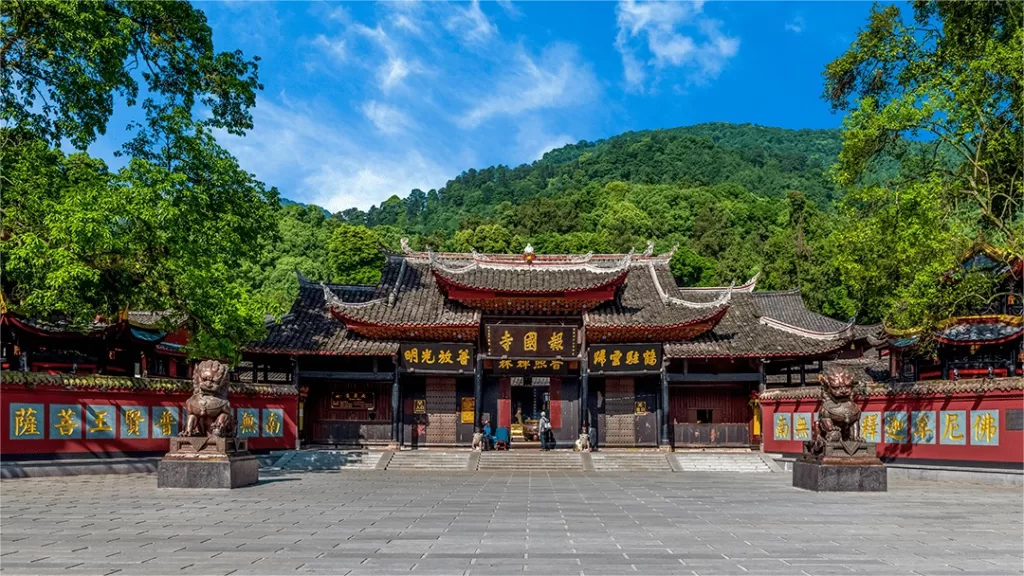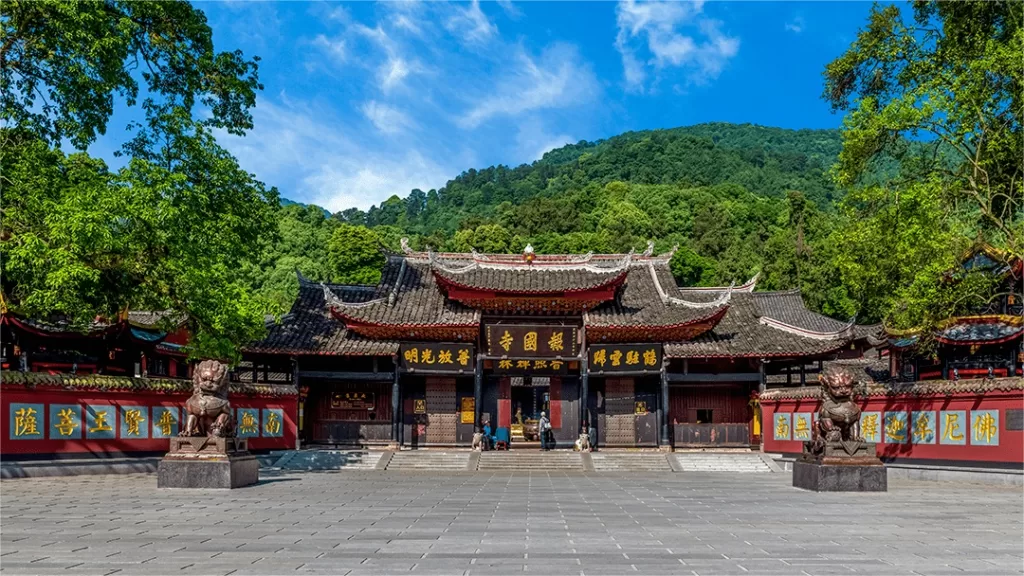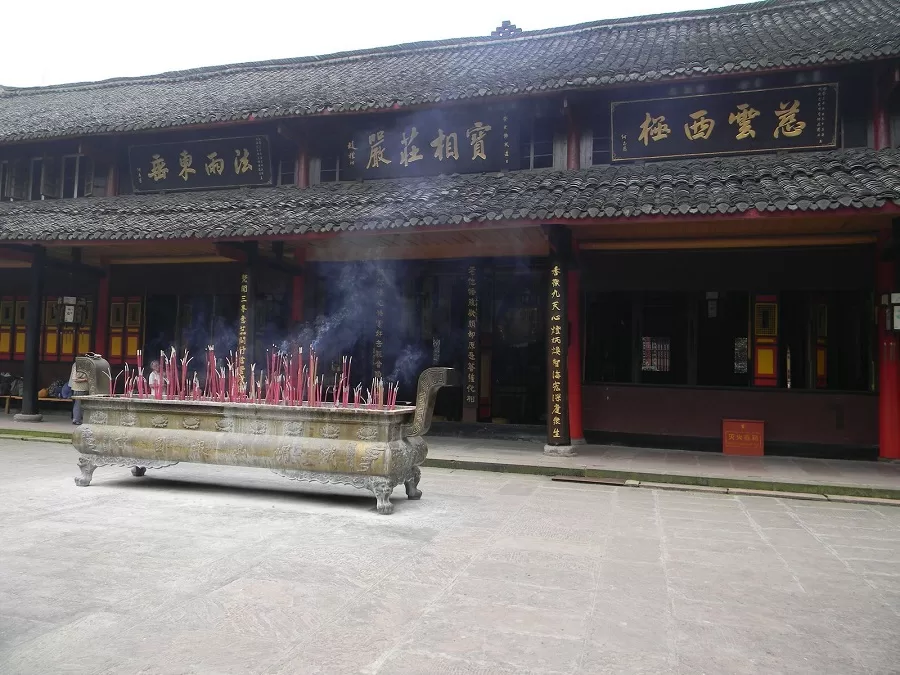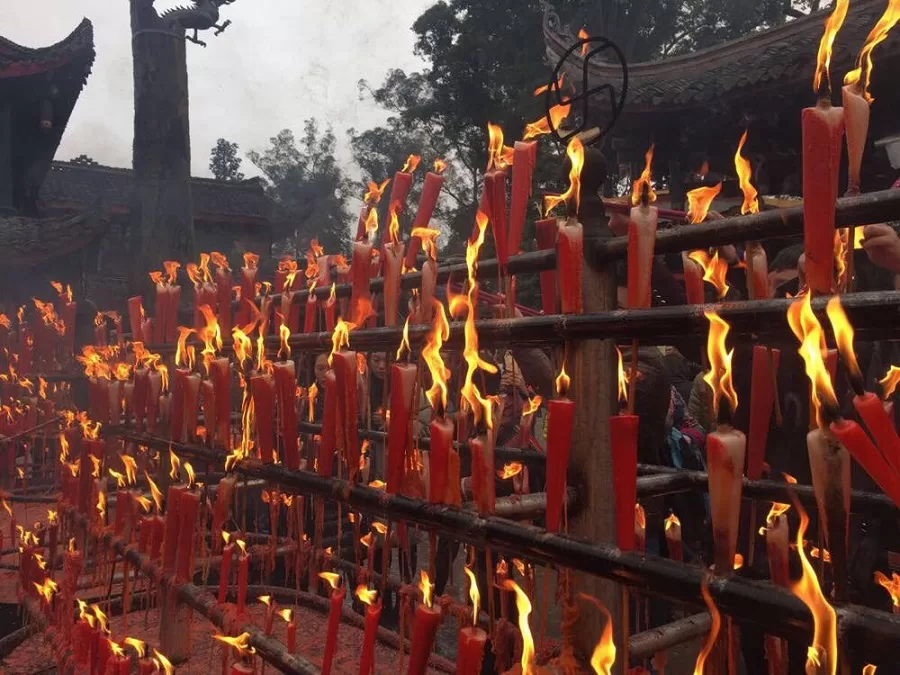Храм Баогуо на горе Эмэй - цена билета, часы работы, расположение и советы


Baoguo Temple (报国寺), located at Fenghuangping near the foot of Mount Emei в Sichuan province, is one of the eight major temples on Emei Mountain. It stands as the largest temple in the mountainous region and serves as a primary starting point for most tourists exploring the scenic area. Originally established during the Ming Dynasty in the Wanli era (1573–1619, some sources suggest 1620), it was initially named Huizong Tang, signifying the convergence of Confucianism, Buddhism, and Taoism.
Covering an area of 40,000 square meters and oriented from west to east, Baoguo Temple features key structures along its central axis, including the mountain gate, Maitreya Hall, Mahavira Hall, Seven Buddha Hall, and a scripture repository. Surrounding these main halls are various pavilions like Huayin Pavilion and Qixiang Pavilion, as well as buildings like the Ningcui Tower.
Baoguo Temple was relocated during the Qing Dynasty and underwent reconstruction in the ninth year of the Shunzhi era (1652). In 1703, Emperor Kangxi renamed the temple to Baoguo Temple, emphasizing the idea of “repaying the country’s grace,” as expressed in the Buddhist text “Shi Shi Yao Lan” (Essentials of the Buddhist Scriptures). The temple stands as a significant cultural and historical site, attracting visitors with its rich heritage and serene surroundings.
Оглавление
- Основная информация
- Расположение и транспорт
- Highlights of Baoguo Temple
- Vlog about Baoguo Temple
- Полезные советы из подлинных отзывов
- Other Attractions in Mount Emei
Основная информация
| Предполагаемая продолжительность тура | Около 1 часа |
| Цена билета | 8 RMB |
| Часы работы | 6.00 - 18.00 |
| Номер телефона | 0086-0833-5592464 |
Расположение и транспорт
The temple is positioned at the foot of Mount Emei, near the town of Emeishan City, which serves as the gateway for visitors embarking on their journey to explore the mountain. You can either walk there from the tourist center or take bus Emeishan 5 or 12, and get off at Baoguo Temple Stop (报国寺站)
Highlights of Baoguo Temple
Махавира Холл

Mahavira Hall, also known as Daxiongbaodian, is the main hall of Baoguo Temple in Mount Emei. This grand and revered hall houses a magnificent statue of Samantabhadra Bodhisattva, a central figure in Mahayana Buddhism. The statue, intricately crafted and adorned, stands as a symbol of wisdom, compassion, and enlightenment. Pilgrims and visitors gather in the hall to offer prayers, make offerings, and seek blessings. The serene atmosphere of Mahavira Hall, combined with the awe-inspiring presence of the statue, creates a deeply spiritual ambiance, inviting contemplation and reverence for the teachings of Buddhism.
Huaya Bronze Pagoda

The Huayan Bronze Pagoda in Baoguo Temple reaches a height of 7 meters, featuring an upper and lower section, each adorned with seven layers of pavilions. This exquisite pagoda houses the entire “Huayan Sutra” and is adorned with 4,700 small Buddha statues. The intricate craftsmanship and the inclusion of the complete Huayan Sutra make this bronze pagoda a cultural and artistic marvel within Baoguo Temple, adding to the spiritual and historical significance of the site. Visitors are captivated by the detailed design and the sacred scriptures embodied in this beautifully crafted pagoda.
Lotus Bronze Bell

The Lotus Bronze Bell, cast during the Ming Jiajing era, stands at 2.8 meters in height with a lip diameter of 2.4 meters, weighing 12.5 tons. Adorned with the names of emperors and eminent monks from the Jin and Tang dynasties onward, along with the complete “Agama Sutra,” this bell is revered as the “Heavenly Kingdom Bell King.” Suspended within the Holy Accumulation Evening Bell Pavilion, its melodious chimes resonate for miles, echoing through the mountainous wilderness of Baoguo Temple. The serene and far-reaching tones of the Lotus Bronze Bell have the power to momentarily transcend worldly concerns.
Porcelain Buddha Statue

Behind the Seven Buddha Hall in Baoguo Temple, there stands a grand porcelain Buddha statue towering at 2.47 meters. Adorning the base of the statue is a pattern of a thousand-petaled lotus, while the Buddha is draped in a robe featuring a thousand Buddhas, symbolizing the Buddhist concept of “one flower, one world; a thousand petals, a thousand Buddhas.” Crafted in the 13th year of the Yongle era (1415) during the Ming Dynasty, this porcelain Buddha, produced in Jingdezhen, Jiangxi Province, serves as a remarkable embodiment of Buddhist philosophy and artistic craftsmanship within the serene halls of Baoguo Temple.
Vlog about Baoguo Temple
Полезные советы из подлинных отзывов
Transportation to Baoguo Temple: The high-speed train station is only 2.5 kilometers away from Baoguo Temple. Visitors can take a local bus directly to the temple. Avoid purchasing a direct bus to Mount Emei, as it won’s stop at Baoguo Temple.
Baoguo Temple’s Efficacy: Baoguo Temple is believed to be particularly effective for career-related wishes. Visitors often seek blessings for their professional endeavors at this temple.
Visit to Emeishan Museum: Outside Baoguo Temple, there is the Emeishan Museum, which does not charge an entrance fee. For those with ample time, it provides a clear map of the terrain and routes of Mount Emei, especially beneficial for hikers planning to ascend the mountain.
Ticket Purchase and Guided Tours: When purchasing tickets, some people may ask if you want a guided tour. The guidance typically involves showing how to offer incense and leading visitors through the main halls for prayers. The decision to opt for a guide is subjective, and some visitors choose to hire one for a fee, often tipping a small amount, typically a few tens of yuan, for the service.
Other Attractions in Mount Emei

Храм Ваньнянь

Храм Фуху


Monkeys In Mount Emei
Достопримечательности Лешаня, Историческая достопримечательность Сычуани